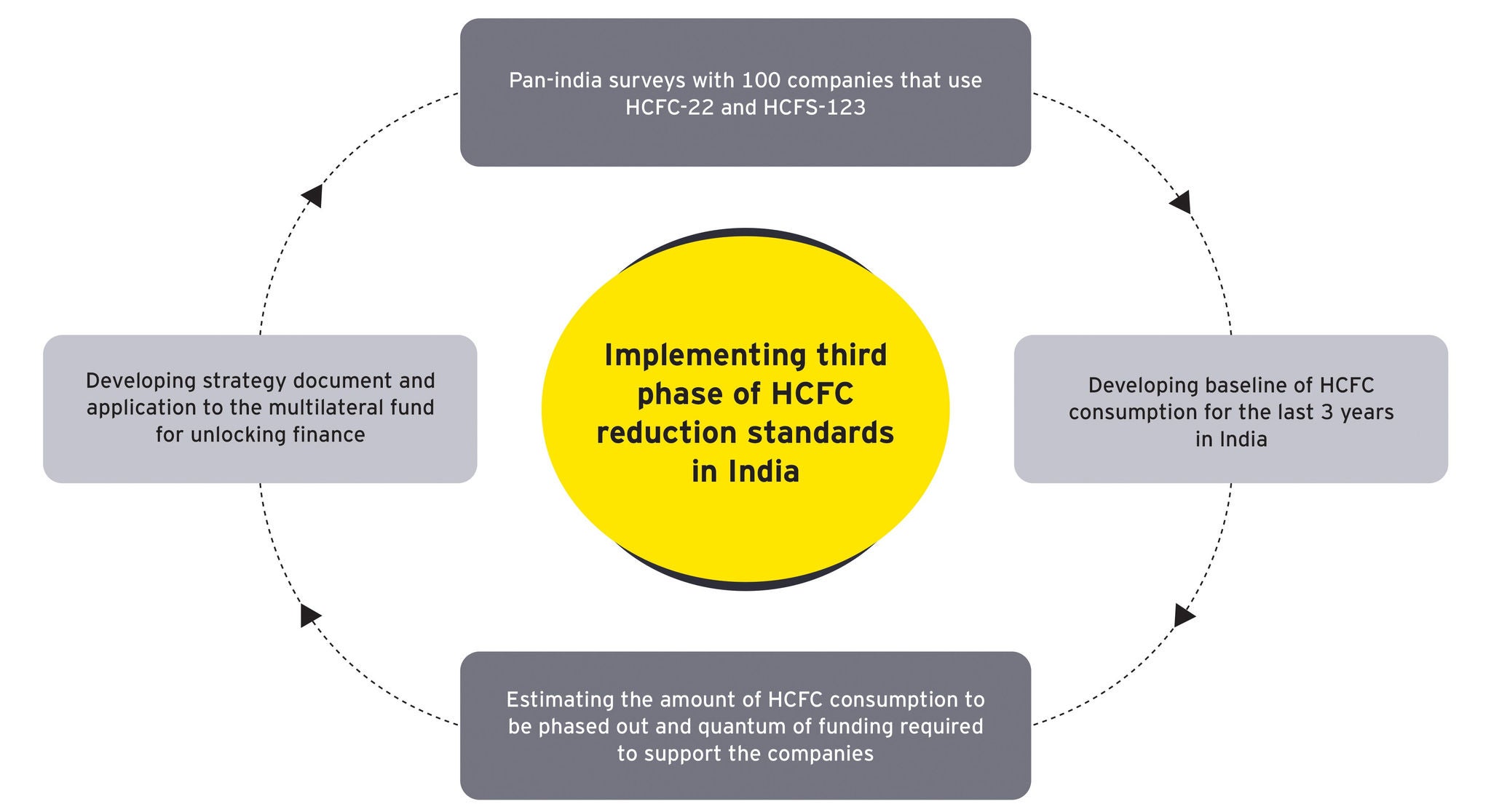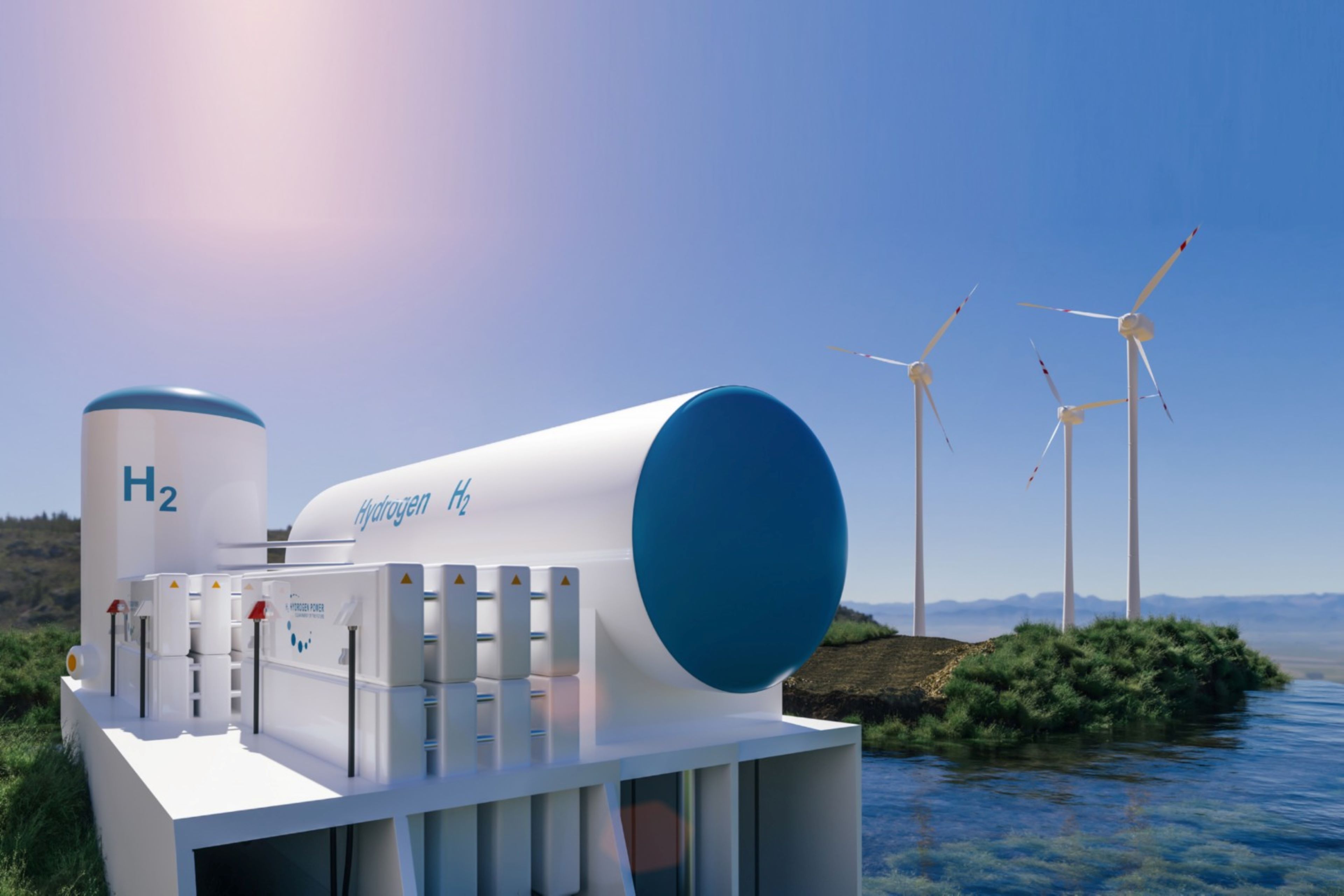EY refers to the global organization, and may refer to one or more, of the member firms of Ernst & Young Global Limited, each of which is a separate legal entity. Ernst & Young Global Limited, a UK company limited by guarantee, does not provide services to clients.
How Government of India implemented a global emission protocol
To reduce hydrochlorofluorocarbon emissions, India is implementing the third phase of its plan for compliance with a global protocol.

The better the question
How can we execute a pan-India phased plan for emission reduction?
How can we execute a pan-India phased plan for emission reduction?
India is among the top producers of hydrochlorofluorocarbons (HCFCs) globally and this has serious environmental consequences, including contributing to ozone layer depletion and climate change The country is a signatory to a global emission protocol of an international body which mandates phaseout of 97.5% of HCFC by 2030. Accordingly, the Government of India introduced a program intended to achieve this objective of 97.5% phase-out by 2030 and complete phase-out by 2040.
The program, categorized in three stages, has the objective to plan and implement a phased reduction of HCFCs as per international standards. While the first stage has concluded, the second stage of the program is currently underway. Given its magnitude and complexity, the Government needed a technical expert with the competency and experience to work with the international body to plan and implement the third and final stage of the program.
Figure 1: Core elements of third phase of program for reducing HCFC emissions in India

EY’s technical competency, wealth of knowledgeable climate professionals and pan-India presence were critical factors for the Government of India to choose EY as an implementation solution provider.

The better the answer
EY built and implemented a comprehensive program strategy.
EY leveraged capabilities in technical evaluation, industry knowledge and regulations.
EY adopted a comprehensive approach to facilitate holistic, contextual, and equitable action plan for implementation of the phase in many sectors which emit HCFCs, including:
- Refrigeration manufacturing
- Air conditioning manufacturing
- Polyurethane foam manufacturing
- Refrigeration and air conditioning servicing
EY also conducted six stakeholder consultation workshops to maximize information dissemination to sensitize the identified list of enterprises about policies and funding guidelines, national regulations, need for phase out and the alternative non ODP (Ozone depleting potential) and low GWP (Global warming potential) options. Based on recommendations from stakeholders, EY finalized the draft sector-specific action plans and national strategy.
In terms of strategy development, EY leveraged stakeholder connects and resources to reach out to refrigeration and air conditioning (RAC) sector and firefighting sectors and shortlisted enterprises based on responses received to support various elements of the program. Subsequently, EY also conducted physical site verification of approved enterprises to ascertain their authenticity. Finally, EY also supported decision making on funding eligibility for enterprises.

The better the world works
Enabling compliance with minimal impact on economy and industry.
The strategic intervention is designed for least disruption to the economy or industry.
EY facilitated India’s compliance with the international protocol targets with minimal impacts on the national economy, on environment and on occupational health. We implemented a combination of interventions such as technology upgradation investments decision support, technical assistance, training and capacity-building, awareness, and education, monitoring and management, in selected HCFC consuming sectors, contributing to achieve complete phase out of consumption of HCFCs.
Figure 2: Core benefits of EY’s strategic support for Montreal Protocol rollout

How EY can help
-
EY Sustainability & ESG Strategy Consulting Services helps with ESG advisory & strategy, M&A, capital allocation & ESG due diligence for long-term value.
Read more -
Explore EY Government & Public Sector services offering tailored solutions for the public sector, government services & consulting for efficiency & innovation.
Read more -
Streamline ESG reporting with EY’s ESG Compass. Explore ESG solutions, tools, dashboards, and fact sheets to enhance sustainability and compliance.
Read more
Related Content
How ESG megatrends and opportunities are shaping our future
EY highlights ESG key trends which are being witnessed across sectors. Learn more about the ESG trends in India..
The Inflation Reduction Act – a turning point for the global green hydrogen market
Discover how the US is using the IRA to jumpstart and improve the economics of low-carbon hydrogen production, making it one of the most competitive regions.
How a hospitality company devised a robust ESG framework
Discover how EY helped develop a target-driven ESG strategy for South Asia’s largest hospitality brand. Learn more about the ESG integration framework.






